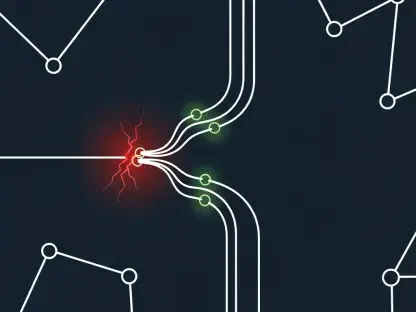In today’s dynamic digital landscape, network security is more critical than ever, with organizations striving to safeguard their data against an ever-evolving array of threats. An effective strategy for addressing these challenges involves integrating real-time risk control mechanisms into security frameworks. This approach leverages cutting-edge technologies to make instantaneous, informed decisions about network access. The collaboration between Portnox and CrowdStrike offers a prime example of this strategy in action. By integrating CrowdStrike’s Falcon platform telemetry with Portnox’s cloud-native network access control solutions, enterprises are equipped with dynamic tools that consider the actual security posture of devices. This partnership showcases how the introduction of Zero Trust Assessment scores—including detailed evaluations of vulnerabilities, threat detections, and device health—plays a pivotal role in shaping access decisions. The goal is to ensure network access is granted only to devices classified as compliant and low-risk, while non-compliant devices face restrictions such as limited connectivity or incentivized remediation before gaining full access. The reduction of manual intervention in handling potential security threats is notable here. Devices may be automatically placed in guest VLANs or restricted based on their assessed risk, streamlining network management and minimizing potential exposure to attacks. This seamless operation underscores a growing trend towards automated, data-driven security models that adapt in real time to prevent breaches in increasingly decentralized IT environments.
Extending Network Security to the Edge with Zero Trust
Zero Trust principles are increasingly being recognized as essential for secure access control in diverse network settings. One significant advantage of integrating real-time risk control lies in its ability to adapt to the rapidly changing requirements of modern network architecture. This is particularly crucial as organizations face escalating challenges in securing remote access and managing unmanaged devices. By embedding Zero Trust principles directly into network access workflows, organizations can dynamically assess and adjust the access privileges of devices based on their current compliance status. This results in a more flexible and responsive approach to network security, enabling institutions to effectively manage access across multiple locations. Employing real-time risk intelligence extends the security boundary to the network edge, presenting businesses with the ability to implement defense mechanisms that evolve alongside emerging threats. Security teams benefit from this integration by being able to define automated policies that continuously evaluate the security posture of devices. This helps to alleviate the reliance on static rule sets and traditional hardware solutions, which may not be agile enough to address the diverse security needs of contemporary IT environments. Through continuous monitoring and assessment, organizations gain the ability to promptly react to potential threats and thereby maintain a more robust defense posture overall.
The Future of Network Security: Real-Time, Adaptive Solutions
In the fast-paced digital world of today, network security has become more crucial than ever, as organizations work relentlessly to protect their data against a myriad of evolving threats. A key strategy to tackle these challenges involves embedding real-time risk control mechanisms within security frameworks. This methodology utilizes advanced technology for instantaneous, knowledgeable decisions regarding network access. A striking example is the collaboration between Portnox and CrowdStrike, which demonstrates this strategy effectively. Integrating CrowdStrike’s Falcon platform telemetry with Portnox’s cloud-native network access control solutions provides enterprises with adaptable tools that assess the security status of devices. This partnership emphasizes how Zero Trust Assessment scores, which include thorough analyses of vulnerabilities, threat detections, and device health, are instrumental in determining access decisions. This ensures only compliant, low-risk devices gain access, while non-compliant ones encounter restrictions like limited connectivity, urging remediation. This trend towards automated, data-driven security systems minimizes manual intervention in decentralized IT environments and swiftly precludes breaches.









